U.S.A. –-(Ammoland.com)- Take any general level world history course and you will find that World War II is boiled down to simplistic black and white terms. The evil Axis regimes in Germany and Japan are dealt with in straight up good vs. evil fight of gargantuan proportions. The Kingdom of Italy’s role as the third major Axis power is overlooked or ignored and it easy to see why. Benito Mussolini’s efforts to restore the Roman Empire turned into a showcase of how not to fight a war.
Needless to say, Italy is known for many things but not her martial prowess. Even her firearm manufacturing reputation is spotty. Italy has Beretta, perhaps one of the best gun makers in the world. But on the opposite side of the coin are Italy’s bizarre and bedraggled mix of military rifles and pistols–none of which draw more consternation than the Carcano family of rifles. To many, the Carcano symbolizes why Italy lost.
The Carcano is reputed to be inaccurate, malfunction-prone, and outdated with a mix of new-fangled technologies when it was released in 1891. The Kingdom of Italy had only been unified a few decades before and she had plenty of powerful enemies who could do her in. She had no choice but to roll the dice in an era that David Lapell called “a deadly game of keeping up with the Joneses”. The smokeless powder rifle race was in full swing and no one wanted their troops to go into battle with an inferior gun. Many rifles came out in that time and it was not apparent which systems worked and which did not until an actual war came.
Italy was a new country and a poor one. The M91 Carcano was a relatively native design that could be produced cheaply but it incorporated some of the latest innovations. It used the fast Mannlicher clip-loading system Italy’s Germanic enemies were using and the first mainstream 6.5mm cartridge, the 6.5×52 Carcano. This relatively small-bore round for the time was flat shooting in an era long before today’s target darlings.
Italy would emerge victorious in World War I and the M91 acquitted itself. But as Italy’s desire to expand continued in the 1930s, problems were found with the 6.5mm cartridge and it was time for an upgrade. That upgrade with the M38 Short Rifle.
An Italian Makeover?
The makeover of the Carcano is more technical than fine wine and whale-based perfumes. World War I had taught Italy some lessons in their first test since unification. A long-barreled infantry rifle, the mainstay of bayonet charges and cavalry defenses with sights designed to fire in volleys at long range were obsolete. Nations who had not abandoned them before the war were keen to ditch them for a universal short rifle—one substantial enough for hard use but handy enough to replace the small cavalry and artillery carbines specialty troops carried around.
The M38 was that short rifle for Italy, sporting a twenty-one-inch barrel. Even though modern rifles had a long range, it was seldom used in combat. Statistics gathered from World War II, and later, indicate that combat takes place mostly within 300 meters. It seems the Italians were already onto this in the interwar period. Their new rifle had no adjustable sights, but a fixed two hundred meter notched rear sight and a front barleycorn front sight.
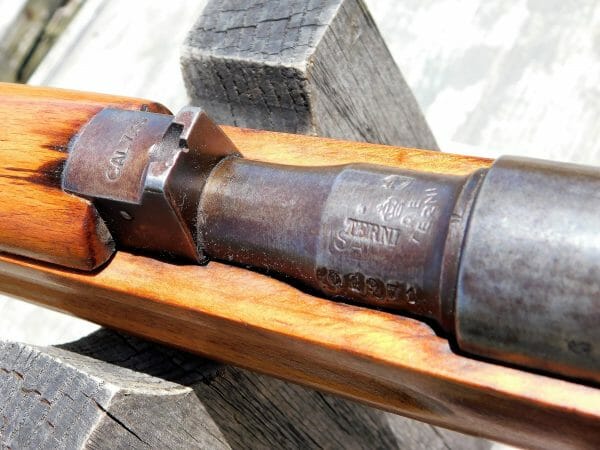
The next big change was the cartridge. The 6.5 Carcano cartridge was looking dated and there were new complaints that the cartridge lacked stopping power when fielded against the Ethiopians in 1936. For the upgraded rifle, the Italians developed the unique 7.35x51mm cartridge. The existing 6.5mm cartridge was necked up for a 30 caliber bullet to solve the stopping power issue, however, the load used a light-for-caliber 128-grain bullet traveling at about 2,200 feet per second.
Other added touches included a folding bayonet and side-mounted sling studs. Otherwise, the M38 was operationally identical to previous service rifles that Italy was fielding. Unfortunately 1938 proved to be the wrong time to adopt a new rifle.
When World War II broke out, Italy watched her German allies make massive gains rapidly with few losses. Britain and France were on the ropes and Benito Mussolini had to get in on the action. He declared war knowing full well that the Army and the industries were not prepared. This was no time to have two different rifle cartridges in service. Italy went back to 6.5 to simplify matters and the new M38 was churned out in that caliber.
Even before the declaration of war, the M38 was already seeing some action. Italy was dumping their 7.35s onto Finland as war aid in that country’s desperate fight against the Soviet Union. The resulting Winter War was truly a David vs. Goliath match meeting the steel of modern war. The Finns acquired some 90,000 rifles, stamped their acceptance mark, and gave some of them taller front sights to shoot to the point of aim at one hundred-fifty yards. The M38 was meant to be a rear-line rifle, but it found its way on the snow planed woodlands that served as the front line.
The 7.35s use in World War II is hard to pin down, but Italy got itself involved in the Mediterranean, North Africa, and the Eastern front with catastrophic results. With Italy’s loss in the war came the end of the widespread use of the Carcano and the interesting cartridges they fired. Years on, they have acquired quite a reputation for mediocrity. But is that really the case? First-hand experience always beats hearsay so I laid down the cash for a 1939 Terni produced M38 in order to find out the truth.
A Note On Ammunition
Eighty years after its ill-fated introduction, 7.35×51 Carcano ammunition is hard to track down. Original ammunition is scarce and valuable. New production ammunition is available from Buffalo Arms and PCI and the .298 inch diameter bore makes the Carcano a chore to handload, but I did so. Reloading is perhaps the cheapest way to load for these rifles. A full reloading special is in order but for my test, I utilized some of Hornady’s .300 inch 128-grain soft point projectiles, Privi Partizan cases, and a minimal load of H335. With several pockets full of shells and a fist full of Buffalo Arms clips, I set out to see for myself how terrible the M38 really was.
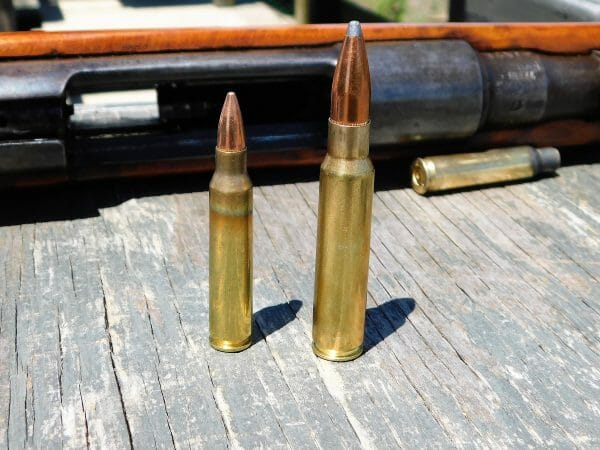
On The Range
I got my M38 through Axis Arms at a reasonable price. It showed up with a little surface rust in the action and some stock art, but the gun was in great mechanical shape and the bore showed plenty of strong rifling. My gun was made at the Terni arsenal in 1939 and it showed the stamp of both the Kingdom of Italy and the “SA” mark indicating acceptance by the Finnish government. This was one of those rifles that the Finns modified with a taller front sight.
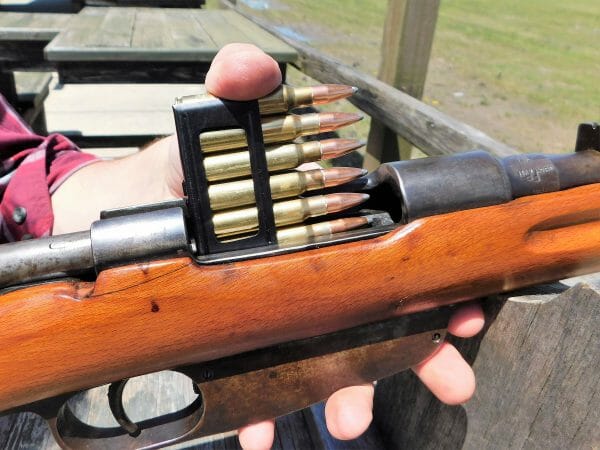
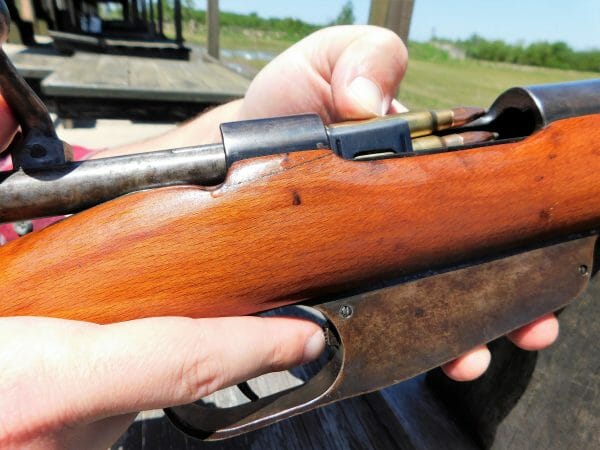
The tapered ends of the clip act to feed rounds into the magazine one at a time with the working of the gun’s bolt after each shot. On the last shot, the empty clip falls out of an opening under the magazine. Partially fired clips can be expelled by pressing down on the cartridges while depressing a knurled button forward of the trigger. It is an interesting setup and one that sparked a lot of interest on the range as I loaded my first six and drew a bead to put the rifle on paper. I aimed under the bullseye, expecting the gun to shoot high given the longer range sighting of the fixed sights. I was surprised that I missed the bullseye entirely. My rounds struck high, but in a respectable three-inch cluster. I found that putting the front sight very low in the V-notch rear sight that I was able to get much closer to bullseye with continued shooting.
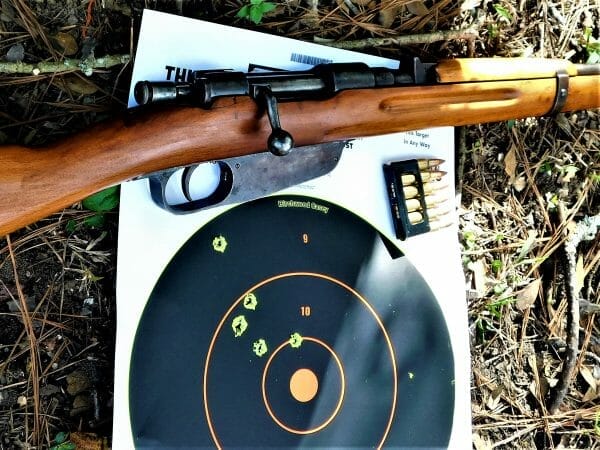
On another day with more ammunition, I tried my hand at some one-hundred yard shooting. At that distance, the front sight looms large over the target but with a good hold and steady rest, I could turn in a six-inch group fairly reliably.
With one hundred rounds of 7.35 burned up, I came away with more than a minuscule amount of respect for the Carcano. Though the sights were crude, they are impossible to screw up and gave me some usable accuracy. The M38 is light and short even by some World War II standards, but the 7.35 round won’t bruise your shoulder. I could see my near-misses because the rifle barely moved. The trigger pull isn’t overly light with plenty take up before a clean break, like many rifles of the era. The safety is somewhat unusual as it is activated by palming it up for safe and to the right to fire the gun. It doesn’t prevent the striker from traveling but it kills the spring tension on it. If dropped on the striker, it could still go forward. The Carcano’s bolt action was noticeably smooth and fast except for some dragging on the final ejection stroke of the cases.
The only issues I experienced with the Carcano have to do with the clips. Originally these clips were one-use disposable items and one could have problems trying to use them over and over again. They go out of spec, get dirty. These new reproduction clips are great quality but take some careful bending to tension them just right to feed the ammunition properly. Even then, I occasionally had a round fail to make it to the bolt face. A bit of thumb helped alleviate this issue. This isn’t necessarily a fault of the gun but one man trying to run it just for fun without arsenal produced ammunition and clips.
A Hidden Italian Gem?
I contend that the M38 Carcano is worthy to be in any military rifle collection thanks to its mix of what is both seemingly dated technology with some forward thinking twists thrown in. Old meeting new, much like Italy herself. The Carcano’s clip system was designed to be rapid in an era before detachable box magazines became affordable. This system stuck around and the Carcano was not only affordable for Italy to produce but familiar to the troops even though we can see faults with the luxury of hindsight.
However, it was a rifle made for the new form of combat that was emerging. Real combat was close. Long rifles and byzantine sighting systems weren’t practical. Furthermore, the need for a long range cartridge–all the rage in the 1890s–lessened in importance. Some have gone onto say that the 7.35 Carcano cartridge was one of the first intermediate cartridges–one that could punch harder than a pistol and be more controllable at close ranges while still being able to do the job of a full powered cartridge at a reasonable distance. While the 7.35 looks like a standard battle rifle cartridge, its light bullet and modest velocity is producing power and recoil like the 7.62×39 Soviet round famous in the SKS and AK pattern of rifles that would come later. The next logical step was to put such a cartridge into a rifle better suited for this new style of war and by the time the dust settled and the Axis lay in ruins, we had the answer.
About Terril Hebert:
Terril Hebert is a firearm writer native to south Louisiana. Under his motto-Guns, Never Politics-he tackles firearm and reloading topics both in print and on his Mark3smle YouTube channel, where he got his start. Terril has a soft spot for ballistics testing, pocket pistols, and French rifles. When he is not burning ammo, he is indulging his unhealthy wildlife photography obsession or working on his latest novel. Scourge of God, published in 2017. See more from Terril on youtube under Mark3smle.


The bolt of the model 91 rifle had TWO opposite locking lugs. You can see a cross section on any edition of W. L. B. Smith’s “Small Arms of the World”
Enrico L. Appiano
No mention of the gain-twist rifling used in these rifles?
Enjoyed this article. I was looking for info on 7.35 mod .38 ammo. A friend of mine was cleaning out a house of a relative that passed away and came across 2 crates of 7.35 ammo. 250 boxes in each crate. Are worth anything? Is there anyone anybody could refer me to who might be interested in this ammo. It is in like new condition. All in cardboard boxes with a cloth pull tabs 3 clips in each box. Any help would be thankful for.
Bwhool.
I’m interested in the ammo. Does your friend still have it?
Can it be used as a single shot? Just slide a cartridge into the chamber and close the bolt and fire?
Depends on the gun. Many can’t, mine can. I’ve heard it’s hard on the extractor.
bs on an m/c being used in the jfk hit. scope mounted for a left-handed shooter, had to be shimmed before fbi could test fire, super-hero shooters unable to replicate, no nitrates on LHO cheek, crappy shot in the core, magic-bulls**t theory; f the warren report and anyone who buys or puts out their bs.
John Kennedy was allegedly killed with this weapon by an ex Marine shooting down hill, long range at a moving target with three hits an extremely difficult task even with an excellent weapon. I didn’t buy it then and don’t buy it now. What I suspect is a clandestine conspiracy, likely within our own government, would have had more credibility having “used” the Springfield 1903 or a Mauser. The film of the hits made with presumably an 8MM movie camera show a head shot that in my estimation came from the front given the movement of the head and likely… Read more »
JFK was killed with the 6.5 Carcano not this one if he got hit with this there would have been a lot more damage!
@moomoo Knerr, Pretty old post, but what the heck. As I recall the distance was about 85 yards. At that distance, slow speed, and straight on angle, I am pretty sure that I could have hit him with my 1936 Marlin model 39 in .22LR
I bought my first rifle in 1963. An antique shop had hundreds of WWII rifles in barrels. I started to choose the Carcano because they were only $5 but the owner warned me against them. You could get one with a scope for a little more.I asked the owner of the store why they were so cheap and he said because they were very inaccurate. I bought a Mosin Nagant for $13. I could not afford the $45 Springfields. Later in 1963 those who knew the Carcano were in disbelief when they heard Kennedy had been killed by the same… Read more »
InRange did a 2gACM, in which Ian fielded the Carcano, positing that it was underrated and in many ways forward thinking. The end results were less than impressive, if I remember the chief complaint was under stress it was easy to accidentally decock the striker.
A minor correction. The folding bayonet went out of production fairly early as they were expensive to produce. For collectors, today folding bayonets cost substantially more than the rifles.
Really enjoy articles about these classic battle guns. Very well done! Remember seeing ads for these in sporting magazines as a kid.
If I remember correctly, the Carcano’s were considered dangerous because they only had one locking lug on the bolts. I had a Japanese Carcano carbine many years ago and was not comfortable shooting it because of this.